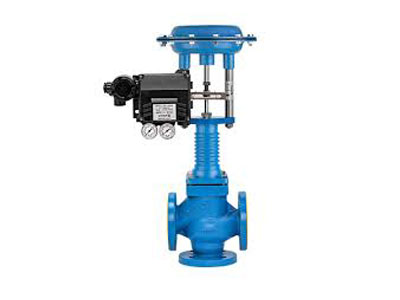Key Takeaway
Several types of valves are used for flow control, including globe valves, ball valves, butterfly valves, and needle valves. Each type offers specific advantages and is suited for different applications and operating conditions.
Globe valves provide precise flow control and are commonly used in throttling applications. Ball valves offer quick shut-off capabilities, while butterfly valves are used for large flow rates. Needle valves provide fine control over flow rates, making them ideal for precise applications.
Types of Valves for Flow Control
Several types of valves are used for flow control, including globe valves, ball valves, butterfly valves, and needle valves. Each type offers specific advantages and is suited for different applications.
Globe valves provide precise flow control and are commonly used in throttling applications. Ball valves offer quick shut-off capabilities, while butterfly valves are used for large flow rates.
Needle valves provide fine control over flow rates, making them ideal for precise applications. Understanding these types is crucial for selecting the right valve for specific needs.

Key Differences Between Valve Types
Flow control valves (FCs) differ from other valves in their primary function, which is to regulate flow rate rather than pressure or temperature. This makes them ideal for applications where consistent fluid delivery is critical.
Unlike control valves, FCs often lack complex automation systems, simplifying their use and reducing maintenance requirements. Their focus is on precise adjustments for steady flow, whereas other valves like pressure relief valves prioritize system safety.
FCs are best suited for straightforward applications like irrigation and HVAC systems, while other valve types cater to broader and more dynamic system needs.
You May Like to Read
Applications for Each Type
Flow control valves (FCVs) come in various types, each suited for specific applications. The most common types include needle valves, globe valves, and ball valves, each offering different benefits in terms of precision, size, and application.
1. Needle Valves are typically used in applications that require precise flow control, such as laboratory setups or low-flow systems. They feature a tapered needle that fits into a small orifice, allowing for fine adjustments to the flow rate. These valves are ideal for controlling flow in systems where small, incremental changes are necessary, such as in hydraulic systems or fuel systems in aircraft.
2. Globe Valves are used in systems that require throttling and fine control of flow rates. These valves feature a spherical body and a movable plug that adjusts the flow. Globe valves are often found in steam or water systems, such as in power plants, where they regulate flow under high-pressure conditions.
3. Ball Valves are widely used for applications where the flow needs to be fully controlled, on or off, with minimal leakage. The valve’s ball has a hole through its center, and by rotating the ball, the flow is either allowed or blocked. Ball valves are commonly used in systems like oil and gas pipelines, water treatment plants, and in residential and commercial plumbing for shutting off or regulating flow.
Advantages and Disadvantages
Flow control valves (FCVs) offer several key advantages, including their ability to precisely regulate the flow rate within a system. This precision allows for maintaining a consistent performance across systems, from HVAC to industrial processes. FCVs are essential in controlling the speed of fluid or gas flow, ensuring that pressure levels are stable and within the desired range. Additionally, they are highly versatile and can be adapted to various systems, including water treatment, chemical plants, and even energy production. Their reliability in regulating flow contributes significantly to the efficiency and safety of a system.
Despite their advantages, flow control valves are not without their drawbacks. One of the main disadvantages is that they can suffer from wear and tear over time, especially when exposed to high-pressure systems or abrasive materials. Regular maintenance and replacements of components like seals or valve seats may be necessary to ensure smooth operation. Moreover, FCVs require careful calibration and installation to ensure they are performing as expected. If not installed properly or if the wrong type of valve is chosen for a specific application, the system could experience inefficient flow regulation or even failure.
In addition, flow control valves often need to be tuned to specific system conditions. This requires knowledge and expertise, as incorrect settings can lead to inefficiencies and system instability. While FCVs can offer precise control, the need for accurate setup and constant monitoring can make them more labor-intensive compared to other types of valves. Nonetheless, with the right maintenance and calibration, FCVs are a highly effective tool for ensuring optimal fluid flow management in various industrial and commercial systems.
Choosing the Right Valve for Flow Control
Selecting the right valve for flow control depends on several factors, including the fluid type, required flow rate, pressure, and temperature. Different valve types, such as globe valves for precise control or ball valves for quick shut-off, cater to specific operational needs.
It’s also important to consider the material of the valve. For systems handling corrosive fluids, stainless steel or alloy valves are necessary to ensure durability and prevent corrosion. On the other hand, PVC valves are often sufficient for less demanding, non-corrosive systems.
Valve sizing is crucial to ensuring efficient flow control. An undersized valve can cause pressure drops, while an oversized valve can lead to inefficiencies and instability. Consulting manufacturers’ guidelines and performing detailed calculations based on system conditions help in selecting the optimal valve for the application.
Conclusion
Several types of valves are used for flow control, including globe valves, ball valves, butterfly valves, and needle valves. Each type offers specific advantages and is suited for different applications and operating conditions.
Understanding the different types of flow control valves is crucial for selecting the right valve for specific needs. The choice of valve should consider factors such as flow rate, pressure, and system requirements, ensuring efficient operation and system reliability.
